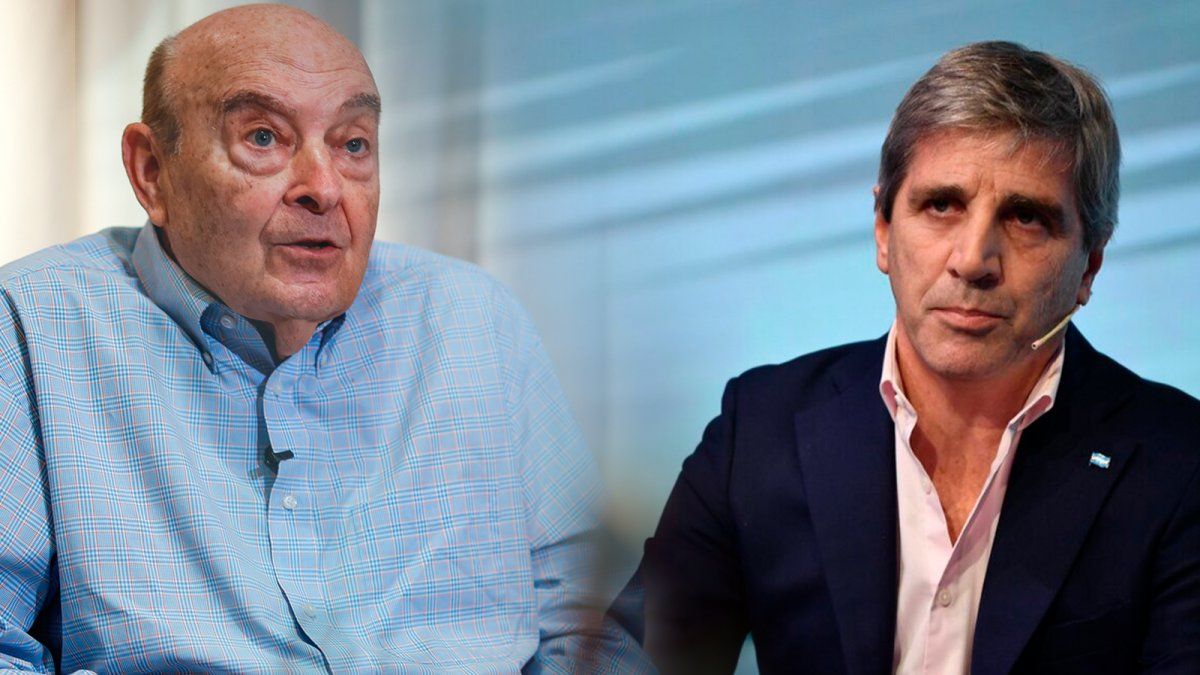Former Minister of Economy, Sunday Cavalloreferred again to the foreign exchange restrictions on his personal blog, noting that “The Government seems to suggest that the restrictions will not be lifted until 2025 and may even continue in 2026”. He also warned that these obstacles make it difficult to refinance debt in dollars and, at the same time, facilitate the debt in pesos.
The Government is talking less and less about lifting the exchange rate restrictions. This is because, according to Cavallo, “he fears that if it were carried out, it would probably would produce a devaluation jump in the exchange rate which applies to the imports already the exportswith its consequent impact on the prices and the inflation rate“, one of the flags of this administration.
However, Cavallo’s diagnosis is that The Government “would be better off advancing the liberalization and reunification of the exchange market, even at the risk of a devaluation jump”despite the acceleration of prices. He also adds that “the exchange rate jump that this would entail, far from reintroducing rampant inflation, It may mark the beginning of a definitive stabilization plan, based on the institutionalization of a competitive exchange and financial system of currencies. capable of sustaining itself indefinitely over time.”
“This plan would achieve not only the total elimination of inflation but also a strong reactivation of the economy”said the former Minister of Economy of convertibility.
X-ray of the present
Cavallo’s report highlights that inflation has stabilized between 3% and 4% per month after several months and that the Government expects this deceleration path to continue to levels below the 1% monthly by mid-2025.
As for the economic activitynoted that “it shows signs of recovery, slow but encouraging” after hitting a bottom in March, as the prices are beginning to recover real income of workers and Retireesas well as the emergence of consumer credit. “In addition, the government has begun to move towards opening up the economy by eliminating distorting taxes and restrictions on imports,” he added.
economic activity Cavallo.jpg
During 2024, in addition, for Cavallo, Fiscal balance in 2024 seems “secured”. To this end, he cites a work by Ieral of the Mediterranean Foundation and mentions that two factors were decisive: the Reduction of primary expenditure and interest from 3.3% to 1.8%. The interests to be paid, for the latter, for the debt in pesos are “relatively low” both for the remainder of the year, which represents about US$584 million; and for the whole of 2025, which it estimates at US$1,261 million. However, the most significant are the interest on dollar debt. They are US$1,857 million for the remainder of 2024 and US$8,947 million in 2025. But, even so, as a percentage of GDP they are still below 1.5%, so they are “perfectly compatible with fiscal balance.”
Domingo Cavallo: “The financial and exchange restrictions make it difficult to “refinancing of dollar debt”
The former Minister of Economy mentions that in order to comply with the payment of interest in dollars, in addition to collecting fiscal resources, it will be necessary for the Central Bank buy enough reserves to be able to sell them to the Treasure. He also adds that, beyond the payment of interest, To avoid default on the debt, it will be necessary to refinance the maturities of capitalboth in pesos and dollars.
“It seems paradoxical, but the existence of the exchange rate and financial restrictionswhich facilitates the refinancing of debt in pesos due throughout 2025, At the same time, it makes it difficult to refinance debt in dollars due to the fall in reserves and the maintenance of country risk at very high levels.. Difficulties in refinancing the debt in pesos may lead to the need to make monetary policy more flexible. Difficulties in refinancing the debt in dollars may lead to a default,” he analyzed.
Cavallo insisted that the government must therefore convince itself that, despite the inflationary jump, the lifting of the restrictions could “mark the beginning of a definitive stabilisation plan.”
Regarding the exchange rate, in particular, the former official states that the real calculated for the official market quotation in July was “below the level it reached immediately after the unification and liberalization ordered by the Macri government in December 2015 and which it recovered when the devaluations began in early 2018,” while the real calculated by the CCL is at the level it had in 2014.
“The appreciation of the peso in the MULC It is a consequence of the fact that the Official exchange rate is a key variable in the disinflation strategyaccompanying the severe fiscal and monetary adjustment,” he says. He also admits that the 2% monthly devaluation plays a central role in the slowdown of inflation and highlights that there was a “very notable” appreciation in the market CCLwhich “is not the result of a movement of free capital” but of the intervention of the Central Bank.
Source: Ambito
I am a 24-year-old writer and journalist who has been working in the news industry for the past two years. I write primarily about market news, so if you’re looking for insights into what’s going on in the stock market or economic indicators, you’ve come to the right place. I also dabble in writing articles on lifestyle trends and pop culture news.




